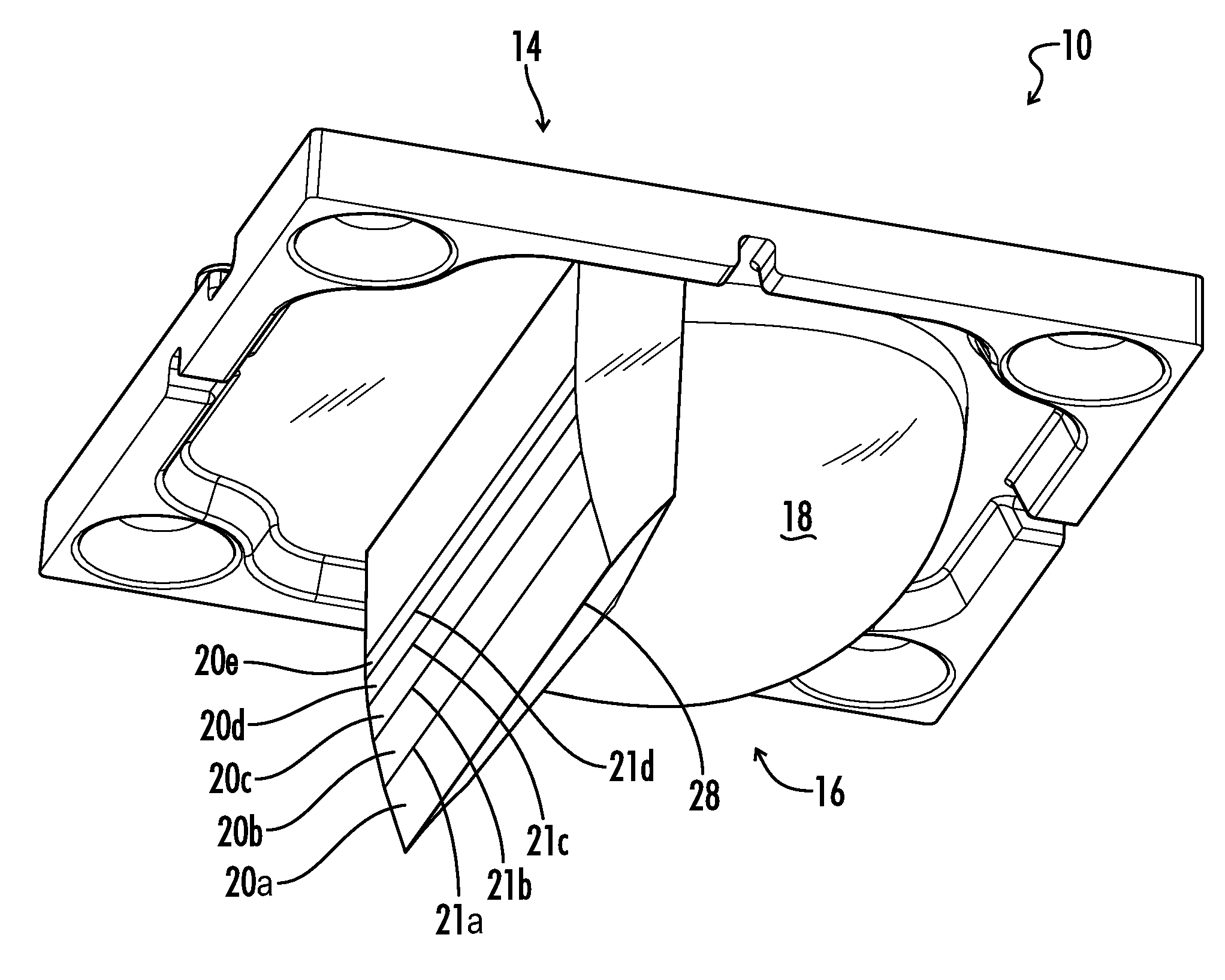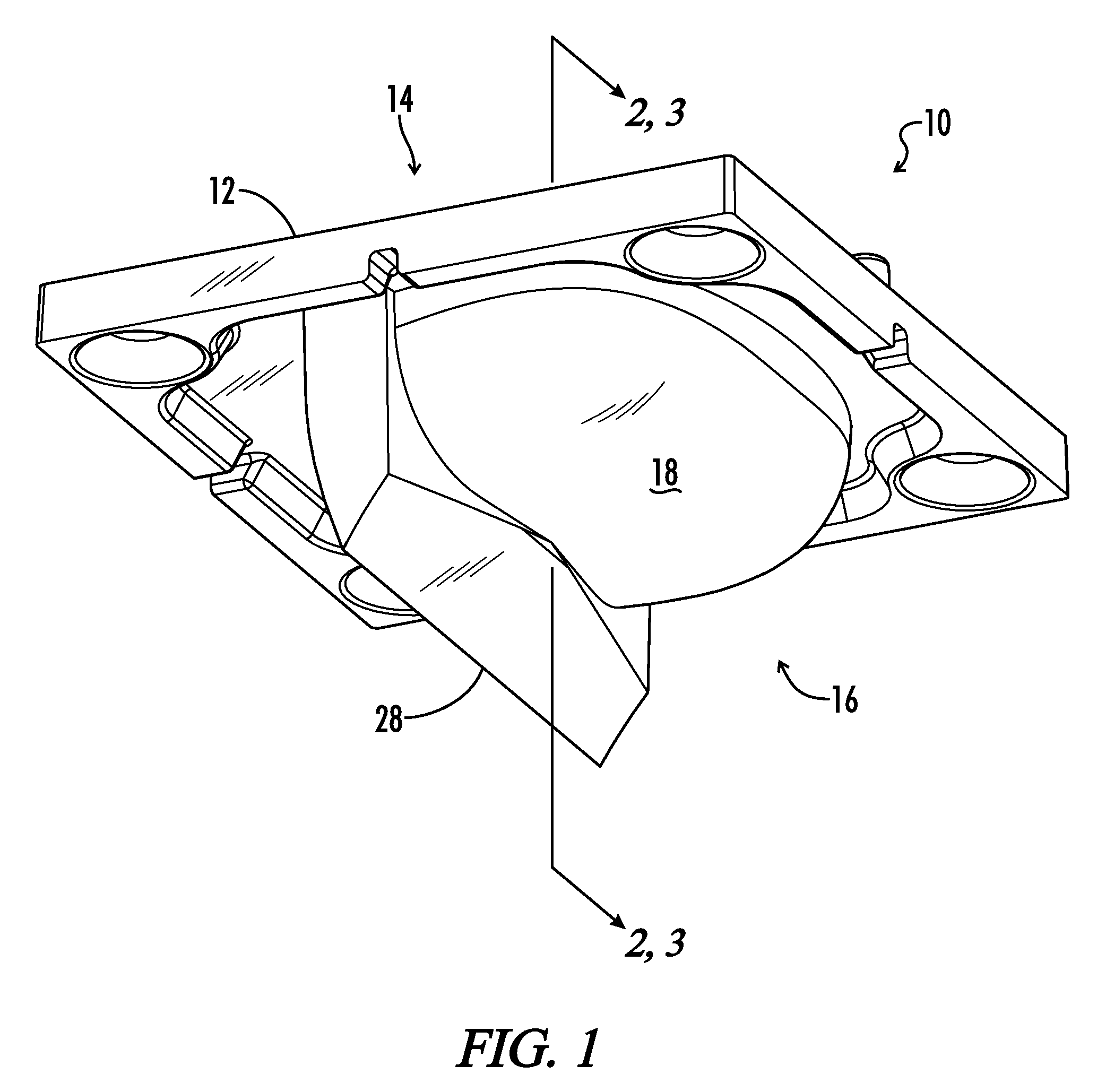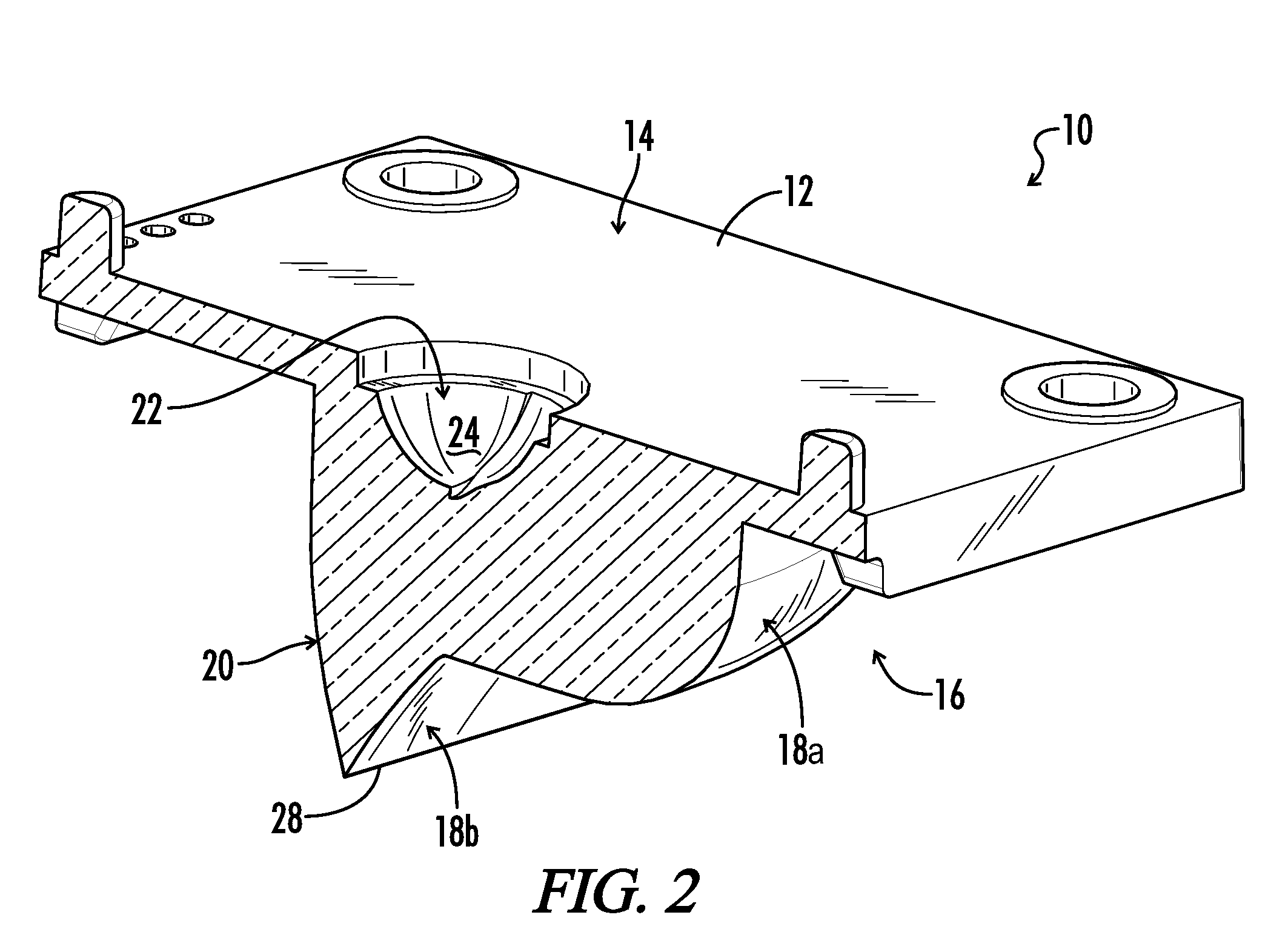Asymmetric area lighting lens
a technology of asymmetric lighting and lens, applied in the field of optical lens devices, lighting systems, asymmetrically distributing light, can solve the problems of reducing lighting efficiency, uneven light distribution profiles, and often inadequate reflectors for many asymmetric lighting applications, and achieve the effect of efficient projection into a specified region
- Summary
- Abstract
- Description
- Claims
- Application Information
AI Technical Summary
Benefits of technology
Problems solved by technology
Method used
Image
Examples
Embodiment Construction
[0031]Referring now to the drawings, FIG. 1 illustrates an embodiment of an optical lens apparatus for asymmetrically distributing light in an area. The lens apparatus is generally configured to be positioned on or near a light emitter such as a lamp, bulb, light emitting diode (LED) or other suitable light emitter. The lens apparatus includes a lens body 10 having an input side 14 and an output side 16. The input side 14 includes the side where the light source is placed. In some embodiments, an emitter recess 22 is defined on the input side 14 of lens body 10. Emitter recess 22 provides a region for placement of a light emitter such as an LED package, a lamp or a bulb. In alternative embodiments, a light emitter may be placed against or near input side 14 without any emitter recess 22 present.
[0032]Lens body 10 may be used with a light emitter in various applications, such as overhead lighting, street lighting, vehicle lighting, indoor lighting, outdoor lighting, or other lighting...
PUM
 Login to View More
Login to View More Abstract
Description
Claims
Application Information
 Login to View More
Login to View More - R&D
- Intellectual Property
- Life Sciences
- Materials
- Tech Scout
- Unparalleled Data Quality
- Higher Quality Content
- 60% Fewer Hallucinations
Browse by: Latest US Patents, China's latest patents, Technical Efficacy Thesaurus, Application Domain, Technology Topic, Popular Technical Reports.
© 2025 PatSnap. All rights reserved.Legal|Privacy policy|Modern Slavery Act Transparency Statement|Sitemap|About US| Contact US: help@patsnap.com



